Secrets of photographing professional urban landscapes, modern architecture, and industrial photo sessions. St. Petersburg photography school
I am going to share my experience of photographing my native city of St. Petersburg, which not only boasts rich architectural forms, but also possesses a distinct climate and landscape.
St. Petersburg is located on a plain, so you have to get up high to really show its size. You can use the quadcopter or shoot from new buildings, which tend to rise higher and higher. Working from high buildings and using the quadcopter both have benefits and limitations, which will influence your photographs.
***
When you shoot from a roof, your freedom of choice is reduced as you either have to make use of what small space you have or decide to leave. The question of composition is therefore less important as when shooting from a quadcopter, which allows you to climb equally high. It also allows you the freedom of moving in any direction, thereby plunging you into the agony of choosing the right vantage point in exactly the same way that you experience it in a classical landscape, when you arrive on the spot and have to choose the perfect vantage point relying exclusively on your sense of beauty.


I would like to describe the distinct St. Petersburg photography style which I have never seen used anywhere else. It relies on the use of a super telephoto lens, which creates an incredible zoom effect. The result is warped perspective and buildings appearing closer to each other. They seem to shrink and to overlap, while also acquiring completely absurd surreal shapes. It goes without saying that this kind of photo needs a very good vantage point.



Unfortunately, the technical limitations of the quadcopter do not allow you to work in this style, as it just cannot be fitted with the right optics. The maximum which it can take is the equivalent of 150–200 mm, which is not strong enough.
Shooting with telephoto lens requires a very good view as the telephoto angle is quite small, only a couple of degrees, and you have to take a long walk around the city to fit into this narrow beam. This is where new buildings allow a large scope for creativity as they always offer unusual angles.
New buildings also tend to sprout in new areas, suddenly creating new perspectives which did not exist before. You may think that you know all the options for putting all the basic sights, such as St. Isaac's Cathedral, Trinity Cathedral, and Peter and Paul Fortress, into a mosaic as you have already tried to shuffle them in every possible way. Then a new building rises, and you see that there are new combinations to create.
Shooting new buildings in the city whose center is world famous for its postcard historic views
I believe that the public is now getting somewhat fed up with the images of the historic palace front of St. Petersburg. The good alternative to classic views of old cities may be found in industrial style images of buildings still under construction and of new neighborhoods whose outstanding architecture is more functional and straightforward, while also carrying a fresh breath of innovation.


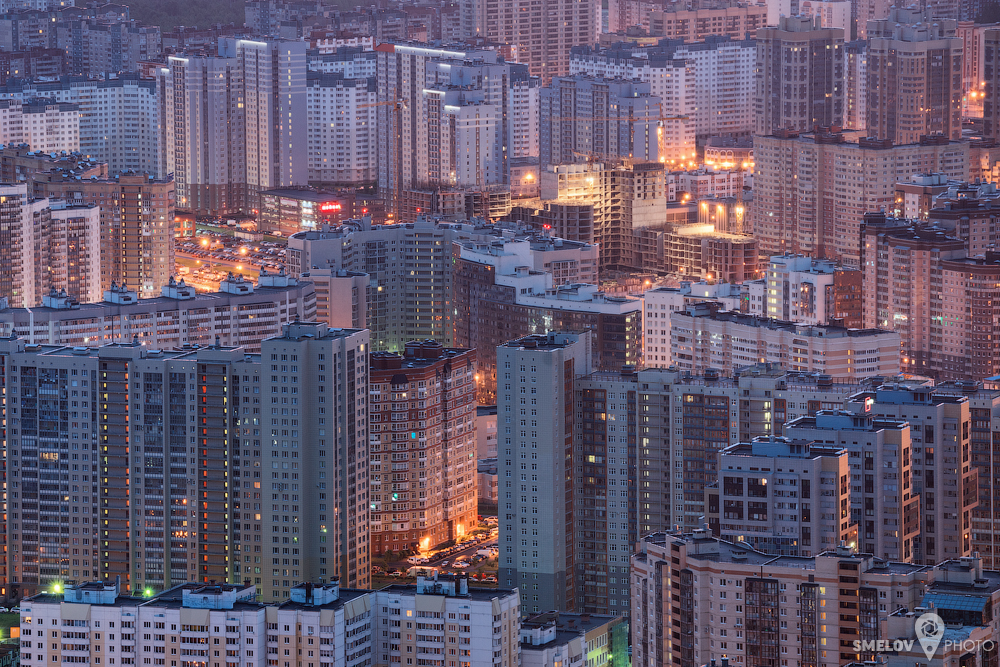
I was fortunate to be able to visit the construction site of the Lakhta Center, which at the moment is planned to be the tallest building both in St. Petersburg and in Europe. I was impressed by the atmosphere inside the facility and by construction work. It was like a city within a city: a huge number of people. If I am not mistaken, there are more than 10 000 people involved in the construction. I believe that the future generations may welcome the photos of this huge construction with the same interest with which we would have now welcomed the photos of the construction of the Great Pyramid of Giza or of the world's largest Buddhist temple of Borobudur. Close shots of parts and elements of the structure of the building allows for some very interesting geometry.
The Lakhta Center skyscraper is located on the outskirts of the city, so if you take a few steps and shoot it from a nearby park or a residential area, you will probably have a pretty boring view of a lonely skyscraper as a result. To place the Lakhta Center tower in the context of the urban environment, you will have to move a bit further and shoot it through the thick of the city, through the urban space, which will frame it just beautifully. This can be a great strategy to use while taking photos of new buildings and houses in a big city. Strangely enough, these photos tend to evoke a great response. I made some images of the Lakhta Center on the background of such famous sights of St. Petersburg at the Peter and Paul Fortress and Trinity and St. Isaac's cathedrals, and they have all been a success with the public.


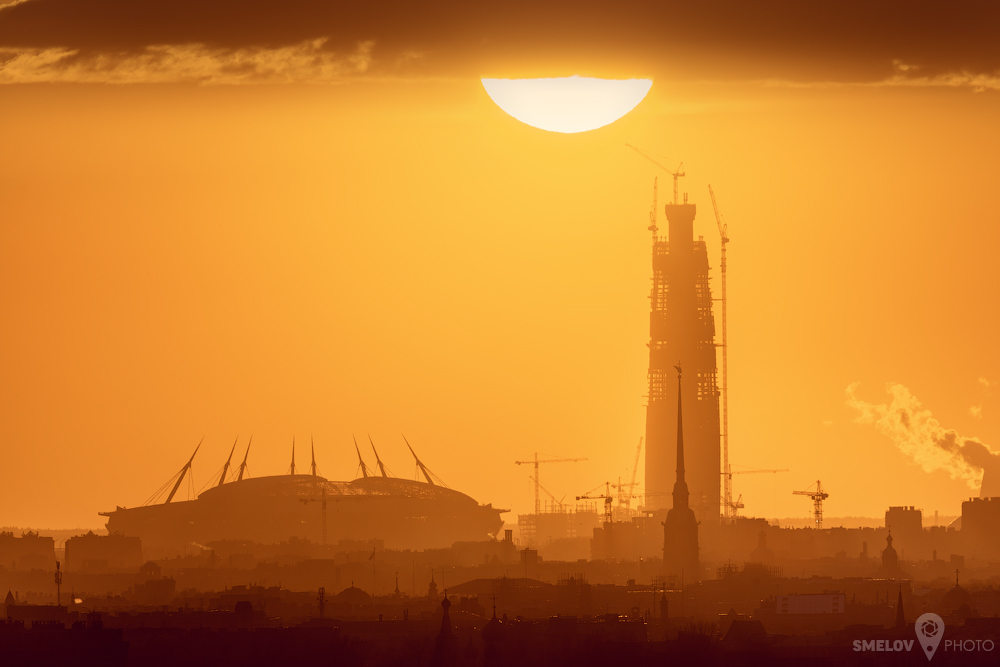
Professional secrets or clichés?
There is a certain set of rules which will almost guarantee that your urban landscape will be a success.
You should, first of all, opt for a beautiful sky with some texture. Empty skies tend to look boring. It will be even better if the clouds have a nice color. It goes without saying that the sky is at its most beautiful at sunset and at dawn. St. Petersburg sunsets are exceptional. I’ve never seen such intensity and purity of color anywhere else. (photo 11)

Secondly, well lit buildings tend to look better because of added solemnity, elegance, and festivity.
Finally, you should take your photos during a clean season. In early spring, for example, St. Petersburg streets are littered with black chunks of dirty snow from the Neva, which is about to move. Naked trees in spring or fall also look less than elegant, while fresh or yellowed leaves will add glamour to your images.

The city is as a rule at its most beautiful in some transitional moments. Night to morning and morning to night, or winter to summer and summer to winter always make for very good pictures.
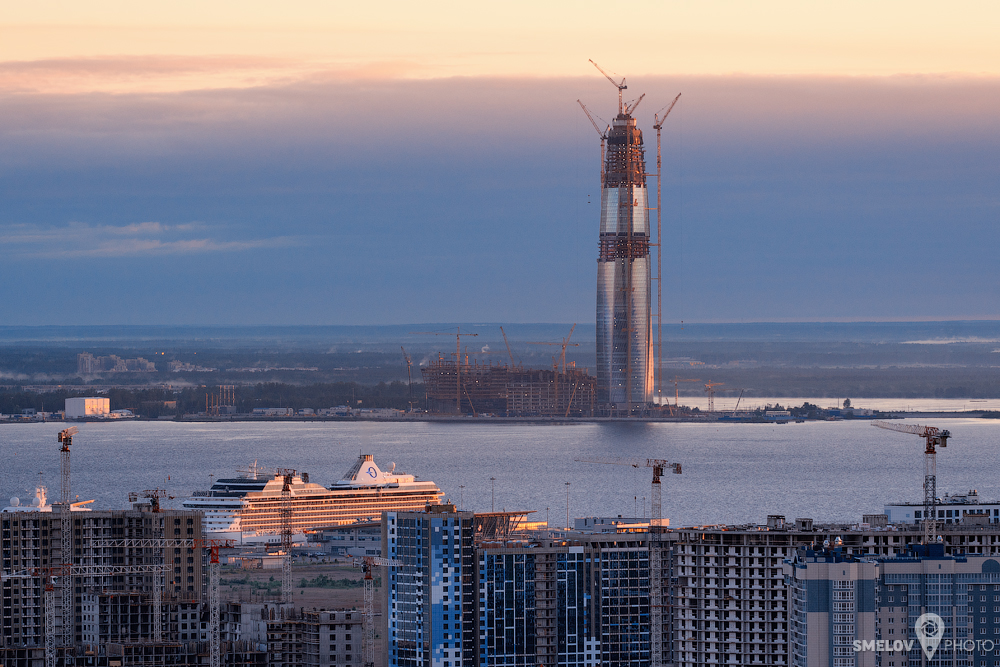
Of course, photography is an art, so it is difficult to choose any particular sequence of actions that would guarantee you stunning photos as a result. There are some photographers in St. Petersburg who rely on these clichés to the letter and achieve amazing results. They have technically stunning images with great use of light and a very beautiful sky, but if you look at them, you cease to distinguish these works and authors. You develop a hunger for diversity and a wish to try something new. And unexpected results can sometimes be achieved by breaking all the rules. Personally, I love the light after a storm when the sun has just come out and the subject of the photograph is well illuminated while the background remains in the shade. This is my favorite kind of light during the day, but unfortunately it is also very tricky to catch.
Making great photos in a bad climate. Bright images and the gray atmosphere
I live and work in the city, which annually gets fewer than 60 sunny days, 57 days of fog, and 105 days with various degrees of cloudiness.
As a professional photographer, I often rely on the so-called golden hour. This is the dawn of twilight when the first urban lighting is lit. It creates a perfect balance between artificial and natural lighting (diffused daylight). Color balance shifts to cold and the sky starts to look dark blue, which animates the picture. Where gray days make everything look dull and plain, this particular hour allows you to make some shots that will look quite festive and pretty.
The quality of the photos largely depends on the intensity of artificial light (public lighting). If the back lighting is newly installed and very bright, it begins to stand out, immediately creating zones that are too brightly lit, which can only be corrected by making dark photos of the same zones and planting them into the original image. If the backlight is balanced, such things do not happen. The Trinity Cathedral makes for a good example. It is very well lit, so when you start shooting in the golden hour, the lights are already very strong and it is difficult to deal with excessive brightness. There is another good example provided by the Constitutional Court building, which has autonomous lighting which goes on before other buildings in the city are lit. If you try shooting it in the golden hour when the city lights have just gone on, you will find that the Court spotlights have already been on for quite a time, and they are already overly bright, which will undoubtedly bring too much light into your photo images.


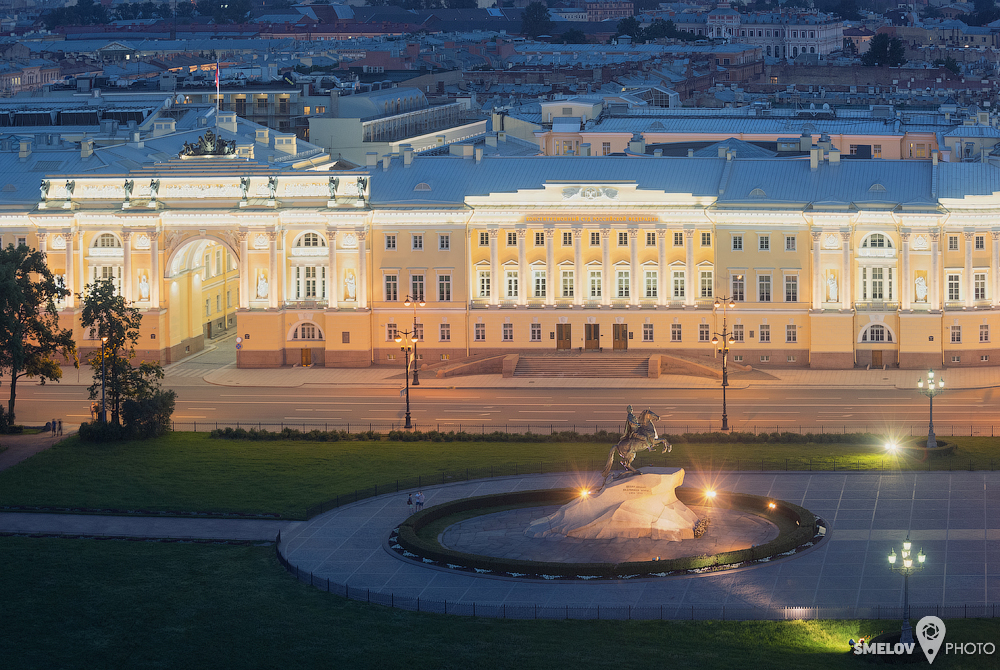
Working in the fog also requires a specific approach. I love foggy landscapes, where it is very important to find the right composition.
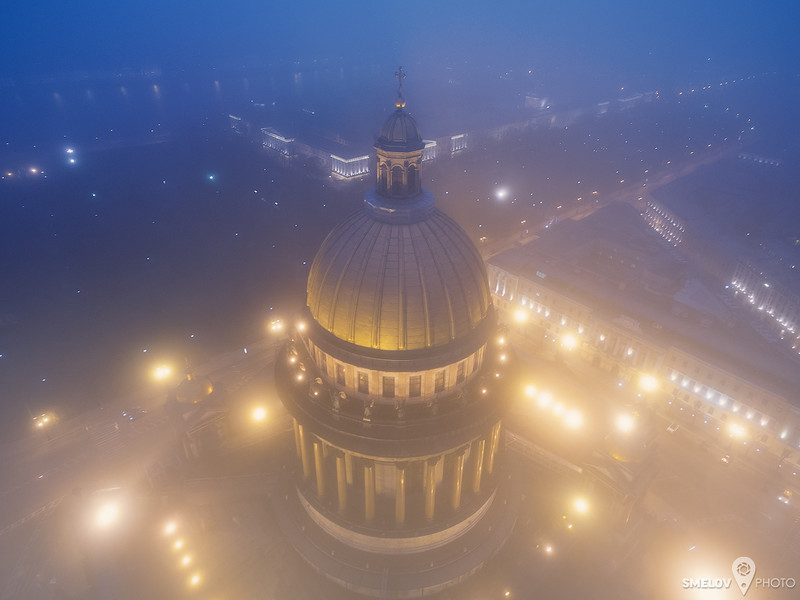
Processing the images
St. Petersburg photographers are very skillful in making the city look flawless from the technical point of view. Image processing is essential when shooting architecture and cityscapes, but to correctly process the photo you have to have a very good idea of the result. You need to take the original photograph that you will be able to process into a quality product. You can't turn a bad photograph into a good one using Photoshop. It is very difficult, for example, to make a good panorama of the city using long exposure at night. And if the panorama is crossed by a road, it will require a lot of work and experience.
Doing something well requires love to begin with. It should be followed by continuous practice. When I first bought the camera, I practiced every day with absolutely no exceptions. I was not deterred by the distance, the cold, or by my lack of sleep, because I had this crazy drive to take a really good photo. Practice still makes perfect.

